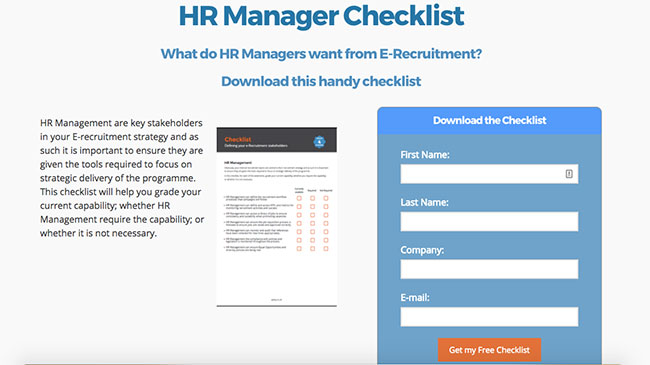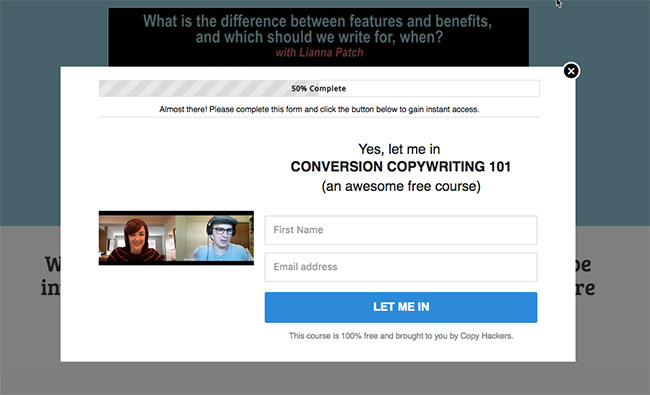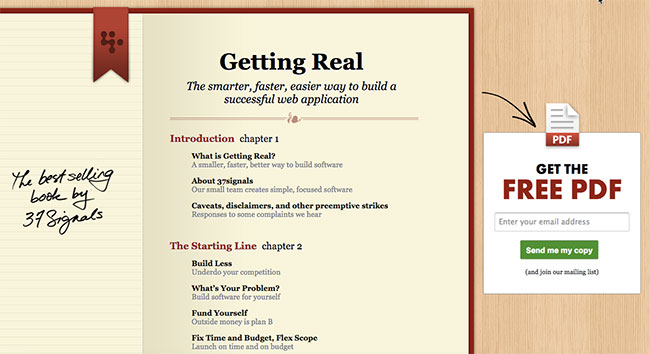You probably already know that providing your audience with amazing content can help you to rank higher in organic search results and get more traffic to your site. But how can you increase your chances of turning all that valuable traffic into leads?
This is where gated content comes in.
If you’re not familiar with it, read this short guide where we:
- Define gated content: what it is and why you should use it
- Walk you through the benefits and drawbacks you should be aware of so you can decide if it’s the right strategy for you
- Explain how to do it right, from both a marketing and a SEO perspective
- Give a step-by-step guide to noindexing a PDF as well as how to add a canonical tag to a PDF to avoid duplicate content issues
Let’s get started.
What is gated content?
It’s simply a premium content piece, such as an ebook, a webinar, a report, a guide or a training video, that is locked and can only be accessed by filling out a form.
In other words, you may have a form on a landing page where a user must input their information (email address, phone number, etc) to get your piece of content. Once the form is filled out, the user is either redirected to another page with the content, or is sent the resource via email.
Here are a few examples of how companies are using a “gate” or lead capture form in front of their resources:



As you can notice, the resources provided are high-value, in-depth content. But along with providing useful information, gated content also enables businesses to gather qualified leads by asking for more information about their prospects – whether that’s an email address, their job or the company they work for.
So, why should you use it?
Because it’s one of the most effective ways to capture valuable information about your potential clients at the same time as you’re getting leads.
You can then use this information to get in touch with them, and nurture them into a sale with further marketing strategies, like email marketing or remarketing.
Don’t know what type of content to gate? According to the 2016 Demand Gen Report:
- E-books (71% of marketers), white papers (83%) and on-demand webinars (63%) are the top three types of gated content.
- The most effective tactics for lead nurturing are white papers (44% of marketers), email newsletters (37%), and webinars (36%).
Benefits and drawbacks
Let’s take a look at the top benefits and drawbacks for using gated content.
Benefits:
- More information about the people who access your content. At the very least, you’ll get their name and email address, but you can always ask for extra information, but only if you need it.
- Get better quality leads. When users give you their information in exchange for your resource, they’re expressing interest in your product or service. This makes it much easier to nurture the lead until the sale is made, and beyond.
Drawbacks:
- Smaller audience potential. Requiring people to fill out a form in order to access your content means that you’ll drastically slash your download or sign up rates. So when using gated content, keep in mind that it’s difficult to convince lots of people to fill out your form.
- Harder to earn links. If you want people to link to or share your content to their own networks, gated content can put a damper on that. That’s because no one wants to link to a landing page that says “Hey, look at how neat this form is!”.
How to do it right
When done right, gated content can be a powerful tool to get more leads.
So next we’ll look at a few marketing and SEO techniques that you can employ to drive more value from gated content.
1. From a marketing perspective
Use semi-gated content rather than fully gating.
Try offering some “teaser” content on your landing page. This can help you achieve three things:
- It’s a chance to show the value and entice more people to download your research
- It’ll give your landing page more content depth, and that can also help it rank in search engine results so people can find when searching for your topic
- It can also increase the chances of people sharing your landing page on social media or linking to it from their sites and blogs.
Take the open access model but use add-ons or expansions.
If you’ve written a high-value piece of content, try this: make it openly available in its entirety but then offer additional incentives to entice people to sign up to receive or give you some information in return. For example, you can ask them to fill out a form if they want to receive that content in a different format, such as PDF or maybe even as a cheat sheet or video.
Using this approach, you’re not only adding value to your landing page and positioning yourself a thought leader, but search engines will also reward you for offering great content to meet the needs of the searchers.
Use paid advertising to reach more people.
If you believe that your piece of content is seriously valuable to your audience and your business, don’t hesitate to use paid advertising to boost your reach.
You can run paid ad campaigns on social networks like Facebook, Twitter and LinkedIn, or you can go with traditional paid search channels such as AdWords.
2. From an SEO perspective
You should optimise the landing page where your form is located just as you would any other page on your site. This means:
- Ensuring the page’s meta title is clear and relevant to the content
- Writing a meta description that entices people to click through to your page
- Have enough content on your landing page to not only prove the gated content is high-value, but also to prove it’s relevant for users searching for that topic.
Now, as you obviously don’t want your gated content to get indexed by search engines (beats the point of gating it) you will need to add a meta robots noindex on that landing page.
If you’re offering a PDF as the gated content, read on as we explain how to go about it.
How to noindex a PDF
Even though a PDF is gated, crawlers can index it if someone posts a dofollow link to it. To avoid seeing it in SERPs, a noindex x-robots tag should be added in the HTTP header as PDFs don’t have an HTML <head> section like regular pages do.
So, for example, if your PDF is at https://www.example.com/white-paper.pdf, the HTTP header should include the following rule:
add_header X-Robots-Tag "noindex, follow";
In .htaccess
<FilesMatch "white-paper.pdf">
Header set X-Robots-Tag "noindex, follow"
On Nginx:
location = robots.txt {
add_header X-Robots-Tag “noindex”;
}
We recommend adding noindex, follow so that crawlers can follow and discover the links included in the PDF file, but not show the PDF in SERPs.
How to add a canonical tag to a PDF
You might want to canonicalise the content of a PDF with a page on your site to avoid duplication or to consolidate backlink signals.
As with the meta robots tag, you can add a canonical URL to a PDFs HTTP header.
So, if you have this page – https://www.example.com/download-white-paper/ – where you have the content of your white paper and a form for users to fill out to gain access to content as a PDF, you will add this page’s canonical as itself in the <head> section of the page:
<link rel="canonical" href="https://www.example.com/download-white-paper/ " />
But you also have the PDF – https://www.example.com/white-paper.pdf – which might be considered duplicate content (as both the PDF and the page cover the same subject).
You’ll want the PDF to point all the signals back to the page. You can do that by using this code in the HTTP headers of the PDF.
Google’s recommended syntax:
In PHP using the header() function:
header('Link: <https://www.example.com/download-white-paper/>; rel="canonical" ' );
Using .htaccess:
<Files "white-paper.pdf">
Header add Link "< https://www.example.com/download-white-paper/>; rel="\canonical\""
Nginx:
add_header Link "< https://www.example.com/download-white-paper/>; rel=\"canonical\"";
You can use the same tactic if you have the same article as a PDF and HTML page for instance, to avoid any duplicate content issues on your website or simply to add canonical tags to a PDF in general.
After you’ve implemented this, make sure to check your HTTP headers to ensure the correct canonical is showing.
To do this you can use a tool such as Chrome’s DevTools.
Load your PDF with the DevTools active under the Network tab.
Select the HTML document from the resource list (usually first to download) and check out the panel that appears on the right. Make sure to look under the “Headers” tab.
You will see something like this:

Adding markup
It’s also a good idea to add markup to your subscription content to help Google work out what is going on with the page, and so it doesn’t mistake your subscription content for cloaked content. If Google thinks you’re cloaking content, then your website may be dropped from its index.
Google introduced this markup when it switched from the first click free model, to what it is calling flexible sampling.
This guide from Google tells you how to add the correct markup to your subscription content. (Don’t forget to use markup for the AMP and non-AMP versions of the pages.)
In conclusion
We hope this post has helped to explain the purpose of gated content along with how it’s best to use it.
Whether you decide to use this tactic to get more leads, it’s up to you. But if you do use it, keep in mind that the only way to receive users’ information and turn them into qualified leads with gated content is by delivering seriously valuable content that helps them solve a problem.
Comments
Please remember that all comments are moderated and any links you paste in your comment will remain as plain text. If your comment looks like spam it will be deleted. We're looking forward to answering your questions and hearing your comments and opinions!